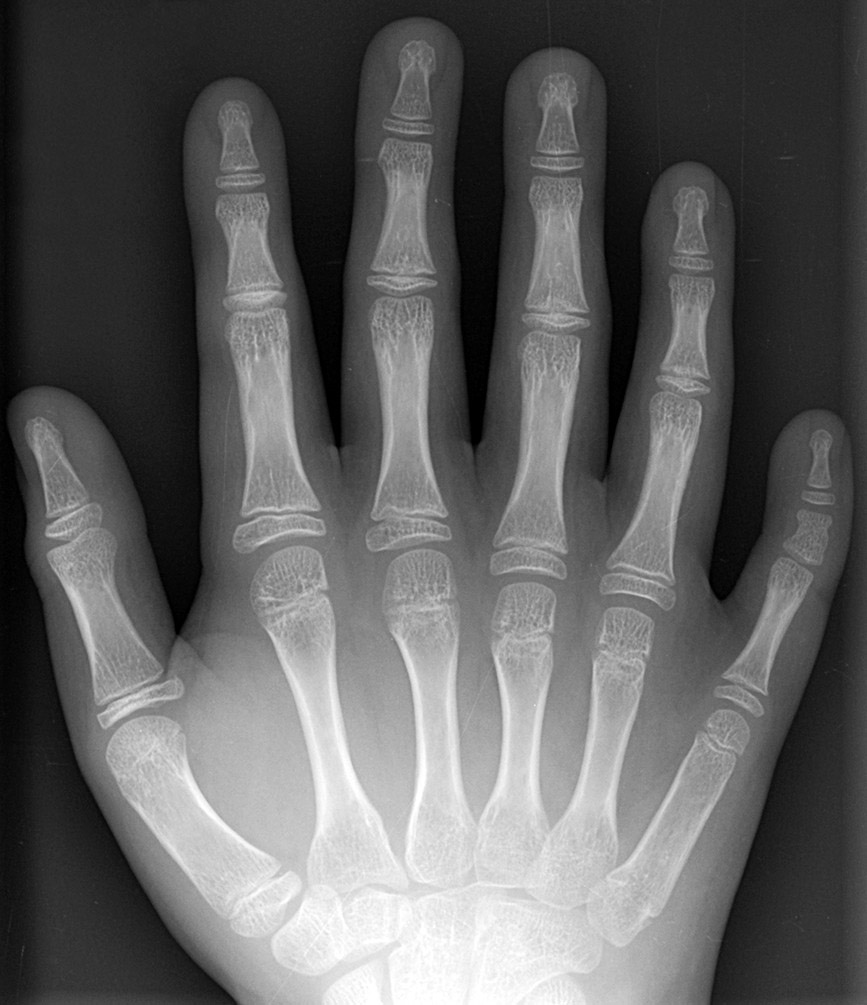Supernumerary body part

Supernumerary body parts are most commonly a congenital disorder involving the growth of an additional part of the body and a deviation from the body plan. Body parts may be easily visible or hidden away, such as internal organs.
Many additional body parts form by the same process as conjoined twins: the zygote begins to split but fails to completely separate. This condition may also be a symptom of repeated occurrences of continuous inbreeding in a genetic line.
Specific types of occurrence
Specific types of additional body parts include:
- Accessory breast – one or more additional breasts[1]
- Cervical rib – an additional rib[2]
- Diphallia - Having two penises.
- Hermaphroditism – having both sex organs[3][4]
- Hyperdontia – additional teeth[5]
- Polycephaly – an extra head
- Polydactyly – additional fingers or toes[6]
- Polymelia — an extra arm or leg.
- Polyorchidism – having three or more testicles[7]
- Supernumerary kidney – a third kidney[8]
- Supernumerary nipples – an additional nipple[1]
- Syndactyly – webbing between the fingers or toes[6]
- Uterine Didelphys – (also Uterine Septum) have two vaginal canals and/or uteri
Related conditions and concepts
Vestigial structures are anatomical structures of organisms in a species which are considered to have lost much or all of their original function through evolution. These body parts can be classed as additional to the required functioning of the body. In human anatomy the vermiform appendix is sometimes classed as a vestigial remnant.
Prosthesis is an artificial extension that replaces a body part, and cybernetics is the study of computer technology in relation to organisms which can include replacement or additional body parts.
Body integrity identity disorder (BIID) is a psychiatric disorder in which a person thinks that they have one or more additional limbs than they should, despite having two arms and two legs. People with this condition often wish to amputate what they see as additional body parts.
A phantom limb is the sensation that a missing limb is still attached to the body.
In zoology a chimera is an animal that has two or more different populations of genetically distinct cells that originated in different zygotes; they do not have additional body parts but do have different sets of chromosomes within one body.
Popular culture
Additional body parts can be used to represent monsters, mutants and aliens. In many cases these "additional body parts" may be normal for the species but are only viewed as additional when compared to humans.
Mythology
In Hindu mythology additional limbs and heads are considered a sign of power.
In Greek mythology, Artemis, the goddess of fertility, was sometimes represented as having numerous breasts. This was particularly notable in the cult of Artemis (Diana) celebrated in the ancient city of Ephesus, in modern Turkey.
See also
References
- ↑ 1.0 1.1 Online Mendelian Inheritance in Man. "Nipples, Supernumerary". Accessed 10 July 2006.
- ↑ PatientPlus. "Cervical ribs and thoracic outlet syndrome". Accessed 10 July 2006.
- ↑ Grumbach, M.M., Conte, F.A., 1998. "Disorders of sex differentiation." in Williams Textbook of Endocrinology, eds. J.D. Wilson, D.W. Foster, H.M. Kronenberg, and P.R. Larsen, (Philadelphia: W B Saunders:1303-1425).
- ↑ Molnar, Sebastian, 17 February, 2004. Plant Reproductive Systems. Accessed 10 July 2006.
- ↑ Derm Atlas. "Image of hyperdontia. Accessed 10 July 2006.
- ↑ 6.0 6.1 Penn State Milton S. Hershey Medical Center A-Z. Polydactyly and Syndactyly. Accessed 10 July 2006.
- ↑ Wipro GE Healthcare. "Polyorchidism". Accessed 10 July 2006.
- ↑ Biology-Online.org. "Supernumerary kidney". Accessed 10 July 2006.